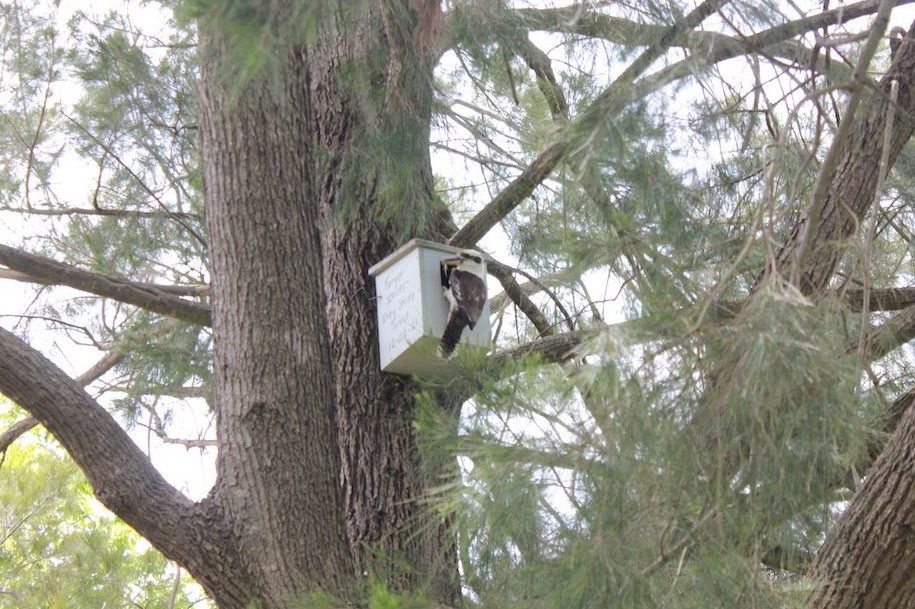
IN February, 10 wildlife habitat boxes were installed on trees along the Queanbeyan River and through the Queanbeyan golf course.
The design of the boxes differed for each of the targeted species – kookaburras, owls, lorikeets, treecreepers, wood ducks, microbats and possums.

“There’s a housing crisis really, for animals that are hollow-reliant,” says Christine Rampling, tree management officer of the Queanbeyan-Palerang Regional Council.
She says animals are attracted to urban areas. Possums and parrots thrive because the food source is reliable and abundant, so they move into the roofs of houses or into garages and, understandably, people complain.
“People worry about risks when it comes to trees, so historically we cut them down and that’s immediately taking away that habitat,” says Christine.
While she admits these artificial habitat boxes are not the best solution, they are definitely a good start.
“If we could actually build boxes out of raw timber or keep the cut-down hollows and mount them up in another tree, that would be a way-more successful natural recreation of their lost habitat,” she says.
Christine got the necessary information from Alice McGlashan from Nest Box Tales who trialled habitat boxes on her own property in order to perfect the design over the years.
“She’s got a website where I got the design specifications and it provided me with a list of animal species that are abundant along the river and are requiring extra habitat support,” says Christine.
Putting the habitat boxes along the Queanbeyan River and golf course was a no-brainer.
“It’s just prime real estate for the animals,” she says.
“It provides a lot of food sources, being near such a reliable source of water as well as the manicured turf; all the manicured turf in the afternoon is covered in parrots and galahs who rip out nice fleshy roots of the grass and feed on that.”
She also stresses that one of the most important features of the boxes is they need to be duckling friendly. A box with an opening big enough for a possum, could also be utilised by an owl or wood duck.
“A big killer of wood duck ducklings is artificial nest boxes that don’t have the features to allow the ducklings to hop out,” she says.
Christine says wood ducklings leave the box at two days old and they have a maximum jumping ability of 18 centimetres, so if the exit hole is higher than that, the ducklings will be stuck in the box and die.
“It was really important with our nest box design that the hole opening was big enough for a wood duck and was safe for them,” says Christine.
The owl, kookaburra and possum boxes also meet the wood duckling requirements, just in case.
“There’s a pretty fine art to nest-box design and installation as well, we’ve got a lot of work to do in regards to research in this area,” she says. Christine warns that people may be well intentioned, but mis-designing the boxes can be fatal.

“People make them out of metal or they paint the inside of the box, which means animals can ingest the paint; they mount them on the wrong side of the tree, so at the time of year when you have animals nesting, the days are starting to get really hot and if you’ve got a metal box on the western side of a tree trunk, any little baby or anything born in there will overheat.”
While Christine is happy with the success of the habitat boxes so far, she’s hoping for it to continue.
“I hope it gets busier. I haven’t actually got confirmation that all the boxes are being used yet, but my dream would be a nest box in every fourth or fifth street tree,” she says.
Who can be trusted?
In a world of spin and confusion, there’s never been a more important time to support independent journalism in Canberra.
If you trust our work online and want to enforce the power of independent voices, I invite you to make a small contribution.
Every dollar of support is invested back into our journalism to help keep citynews.com.au strong and free.
Thank you,
Ian Meikle, editor





Leave a Reply